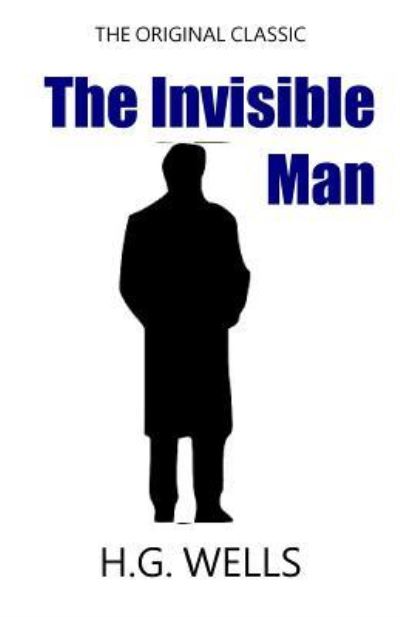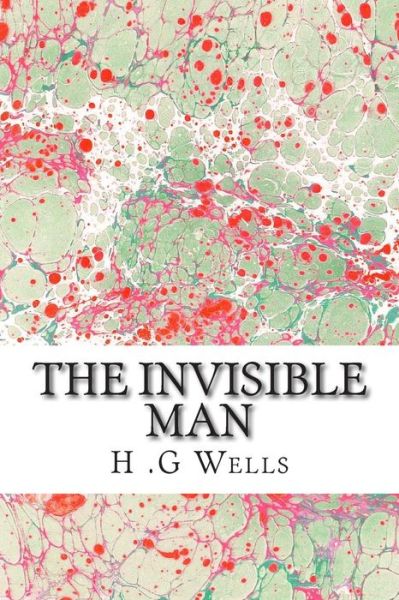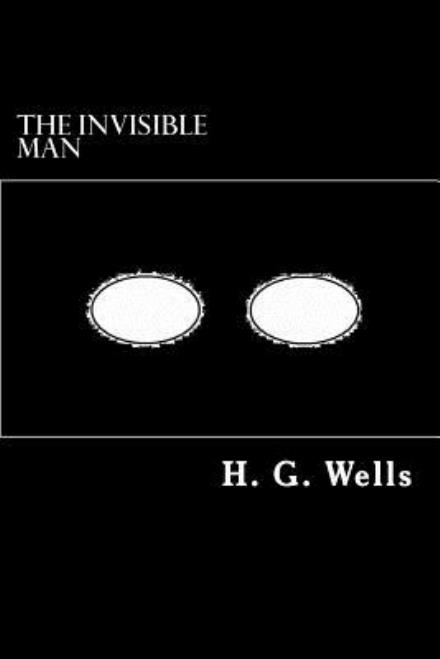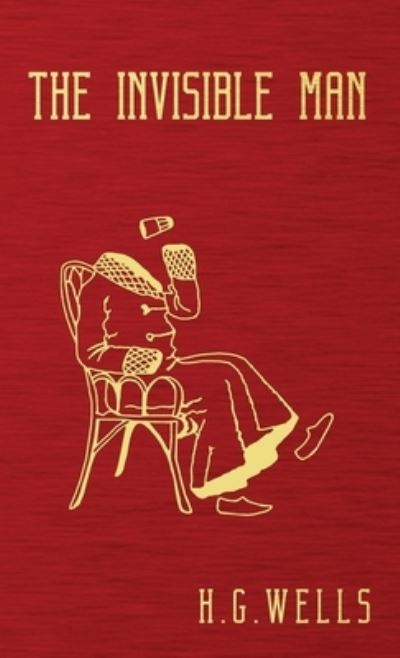
Tell your friends about this item:
The Invisible Man
H G Wells
Ordered from remote warehouse
Also available as:
- Paperback Book (2017) $ 13.49
- Paperback Book (2018) $ 13.49
- Paperback Book (2017) $ 13.99
- Paperback Book (2018) $ 13.99
- Paperback Book (2018) $ 13.99
- Paperback Book (2013) $ 14.49
- Paperback Book (2015) $ 14.49
- Paperback Book (2016) $ 14.49
- Paperback Book (2014) $ 14.49
- Paperback Book (2017) $ 14.49
- Paperback Book (2018) $ 14.49
- Paperback Book (2017) $ 14.99
- Paperback Book (2016) $ 15.49
- Paperback Book (2019) $ 15.49
- Paperback Book (2014) $ 15.49
-
Paperback BookEnglish edition(2016) $ 15.49
- Paperback Book (2018) $ 15.49
-
Paperback BookWarbler Classics Annotated edition(2022) $ 15.49
- Paperback Book (2017) $ 15.49
- Paperback Book (2016) $ 15.49
- Paperback Book (2017) $ 15.49
- Paperback Book (2017) $ 15.49
- Paperback Book (2017) $ 15.49
- Paperback Book (2016) $ 15.99
- Paperback Book (2018) $ 15.99
The Invisible Man
H G Wells
Publisher Marketing: The Invisible Man is a science fiction novella by H. G. Wells published in 1897. Wells' novel was originally published in Pearson's Magazine in 1897, and published as a novel the same year. The Invisible Man of the title is Griffin, a scientist who theorises that if a person's refractive index is changed to exactly that of air and his body does not absorb or reflect light, then he will be invisible. He successfully carries out this procedure on himself, but cannot become visible again, becoming mentally unstable as a result. The book starts in the English village of Iping in West Sussex, as curiosity and fear are started up in the inhabitants when a mysterious stranger arrives to stay at the local inn, The Coach and Horses. The stranger wears a long, thick coat, gloves, his face is hidden entirely by bandages, large goggles, and a wide-brimmed hat. The stranger is extremely reclusive and demands to be left alone, spending most of his time in his room working with a set of chemicals and laboratory apparatus, only venturing out at night. He quickly becomes the talk of the village as he unnerves the locals. Meanwhile, a series of mysterious burglaries occur in the village in which the victims catch no sight of the thief. One morning when the innkeepers pass the stranger's room, they enter in curiosity when they notice the stranger's clothes are scattered all over the floor but the stranger is nowhere to be seen. The furniture seems to spring alive and the bedclothes and a chair leap into mid-air and push them out of the room. Later in the day Mrs. Hall confronts the stranger about this, and the stranger reveals that he is invisible, removing his bandages and goggles to reveal nothing beneath. As Mrs. Hall flees in horror, the police attempt to catch the stranger, but he throws off all his clothes and escapes. The Invisible Man flees to the downs, where he frightens a tramp, Thomas Marvel, with his invisibility and forces him to become his lab assistant. Together with Marvel, he returns to the village where Marvel steals the Invisible Man's books and apparatus from the inn while the Invisible Man himself steals the doctor's and vicar's clothes. But after the theft, Marvel attempts to betray the Invisible Man to the police, and the Invisible Man chases after him, threatening to kill him Review Citations: School Library Journal 11/01/2009 pg. 138 (EAN 9781602706774, Library Binding) Hornbook Guide to Children 01/01/2010 pg. 65 (EAN 9781602706774, Library Binding) Wilson Middle/Junior Hi Catalo 01/01/2009 pg. 403 (EAN 9781597071062, Hardcover) School Library Journal 03/01/2008 pg. 227 (EAN 9781598898873, Paperback) School Library Journal 03/01/2008 pg. 227 (EAN 9781598898316, Library Binding) Library Journal 03/15/1997 (EAN 9780745173740, Analog Audio Cassette) Wilson Fiction Catalog 01/01/2006 pg. 970 (EAN 9780141439983, Paperback) Wilson Senior High Core Col 01/01/2007 pg. 831 (EAN 9780141439983, Paperback) Wilson Fiction Catalog 01/01/2010 pg. 975 (EAN 9780141439983, Paperback) Wilson Senior High Core Col 01/01/2011 pg. 1084 (EAN 9780141439983, Paperback) New York Times Book Review 12/16/2007 pg. 16 (EAN 9780486270715, Paperback) Library Journal 12/01/2010 pg. 77 (EAN 9781843794332, Compact Disc) - *Starred Review Contributor Bio: Wells, H G Often called "the father of science fiction," British author Herbert George (H. G.) Wells' literary works are notable for being some of the first titles of the science fiction genre, and include such famed titles as The Time Machine, The War of the Worlds, The Island of Doctor Moreau, and The Invisible Man. Despite being fixedly associated with science fiction, Wells wrote extensively in other genres and on many subjects, including history, society and politics, and was heavily influenced by Darwinism. His first book, Anticipations of the Reaction of Mechanical and Scientific Progress Upon Human Life and Thought, offered predictions about what technology and society would look like in the year 2000, many of which have proven accurate. Wells went on to pen over fifty novels, numerous non-fiction books, and dozens of short stories. His legacy has had an overwhelming influence on science fiction, popular culture, and even on technological and scientific innovation. Wells died in 1946 at the age of 79.
| Media | Books Paperback Book (Book with soft cover and glued back) |
| Released | May 5, 2011 |
| ISBN13 | 9781461152392 |
| Publishers | Createspace |
| Pages | 96 |
| Dimensions | 203 × 254 × 5 mm · 208 g |
More by H G Wells
Others have also bought
More from this series
See all of H G Wells ( e.g. Paperback Book , Hardcover Book , CD , MP3-CD and Audiobook (CD) )




































![Cover for Martin Johannes Nordkvist · Bandit (Sewn Spine Book) [3rd edition] (2009)](https://imusic.b-cdn.net/images/item/original/897/9788789929897.jpg?martin-johannes-nordkvist-2009-bandit-sewn-spine-book&class=scaled&v=1486387739)


![Cover for William Diehl · Primal Fear (Paperback Book) [New edition] (1996)](https://imusic.b-cdn.net/images/item/original/853/9780099435853.jpg?william-diehl-1996-primal-fear-paperback-book&class=scaled&v=1395467813)
![Cover for Robert Graysmith · Zodiac: The Shocking True Story of the Hunt for the Nation's Most Elusive Serial Killer (Paperback Book) [Reissue edition] (2007)](https://imusic.b-cdn.net/images/item/original/189/9780425212189.jpg?robert-graysmith-2007-zodiac-the-shocking-true-story-of-the-hunt-for-the-nation-s-most-elusive-serial-killer-paperback-book&class=scaled&v=1410266843)
![Cover for Philip K Dick · Minority Report (Paperback Book) [Film Tie-in edition] (2009)](https://imusic.b-cdn.net/images/item/original/207/9780575075207.jpg?philip-k-dick-2009-minority-report-paperback-book&class=scaled&v=1399232757)
![Cover for Finn jul Hjortsøe · Kim Vender Tilbage (Hardcover Book) [1st edition] (2013)](https://imusic.b-cdn.net/images/item/original/498/9788799552498.jpg?finn-jul-hjortsoee-2013-kim-vender-tilbage-hardcover-book&class=scaled&v=1438030683)




![Cover for H G Wells · The Invisible Man (Royal Collector's Edition) (Case Laminate Hardcover with Jacket) (Hardcover Book) [Royal Collector's edition] (2021)](https://imusic.b-cdn.net/images/item/original/950/9781774762950.jpg?h-g-wells-2021-the-invisible-man-royal-collector-s-edition-case-laminate-hardcover-with-jacket-hardcover-book&class=scaled&v=1642644941)
![Cover for H G Wells · The Invisible Man - A Grotesque Romance (Paperback Book) [Wisehouse Classics edition] (2016)](https://imusic.b-cdn.net/images/item/original/128/9789176372128.jpg?h-g-wells-2016-the-invisible-man-a-grotesque-romance-paperback-book&class=scaled&v=1648987024)








